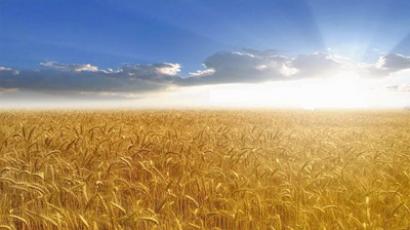Black Earth Farming posts 1Q 2011 net loss of 448.1 million roubles

Swedish listed Russian focused agricultural producer, Black Earth Farming, has posted a 1Q 2011 net loss of 448.1 million roubles under IFRS.
The net result compares with a 1Q 2010 net loss of 270.4 million roubles, as US dollar expressed EBITDA worsened from negative $4.2 million for 1Q 2010 to negative $8.6 million, while rouble denominated revenues slumped from 412.5 million in 1Q 2010 to 127.19 million roubles in 1Q this year.Black earth Farming noted that the figures largely reflected 47% of its 2010 harvest remained in inventory, which in turn had been revalued lower to reflect a 25% fall Russian domestic prices, with uncertainty continuing about the duration of Russia’s export ban which was imposed in August 2010. Black Earth Farming CEO, Sture Gustavsson, said uncertainty about the duration of the grain export ban, meant that the gap between Russian prices and global prices in export markets had widened considerably, which coupled with 1Q sales the company described as marginal, and its accounting policies meant the bottom line had worsened.“A high degree of uncertainty characterized the Russian domestic grain market during the beginning of 2011. Government intervention and shifting market expectations regarding the export ban on grains pressured domestic prices downwards. Domestic supply held for post ban exports, came to market as Russian officials signaled that the ban would likely be in place until the completion of 2011 harvest. In addition weaker demand as well as previously “underreported stocks” in southern export regions has left Russian stocks higher than originally expected, albeit at historically low levels. As a result the pricing gap between domestic and international wheat prices has widened since February 2011.”Gustavsson added that the focus for 2H 2011 would be to drive down costs per tonne. “Despite the unusually late arrival of spring, our seeding campaign is just about completed with approximately 235 thousand hectares of commercial crops to be planted for 2011 (see p. 8-9 for more details). This represents a 30% increase compared to the harvest area in 2010. Until the harvest commences in July it will be essential to maximize the crop yields in order to drive down our costs per ton as low as possible. Weather conditions will be a key factor to monitor, while we are also committed to further enhance our operational execution of field works. The second key factor affecting our revenues going forward will of course be crop prices, which have historically been very volatile. Currently we have been able to sell forward some of our production of oilseeds and malting barley. We will continue to manage our risks to the greatest extent possible, while focusing on the factors that we can affect, to ensure improved profitability going into the second half of 2011.”













